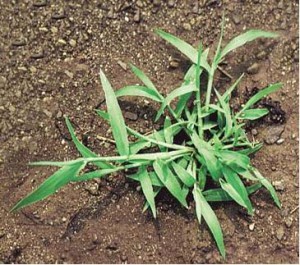Crabgrass grows very low to the ground and is the bane of all lawn-lovers. It will first appear in “hot spots” along pavement or in areas of full sun. It will be more severe in lawns that were allowed to dry out in the spring prior to receiving regular irrigation.
Mowing height can have a big impact. Lawns mowed higher (over 2½ inches) tend to have less problems with annual grasses. Close-mowed lawns tend to open up, allowing weeds like crabgrass to invade. Light, frequent watering also favors this weed.
Until the conditions that promote crabgrass are corrected, it and other weeds in the lawn will continue to be a concern. Using practices such as core aeration, topdressing with organic matter, overseeding to increase grass plant density, managing irrigation, managing thatch and mowing at the proper height will lessen the chances of crabgrass as a weed problem in your lawn.
When crabgrass and yellow nutsedge emerge, they look a lot alike. Yellow nutsedge will be shinier, have skinnier blades, and stand straight up. Crabgrass will lay flat. Service calls for crabgrass are FREE. If you have it, call us and we will kill it for you.

